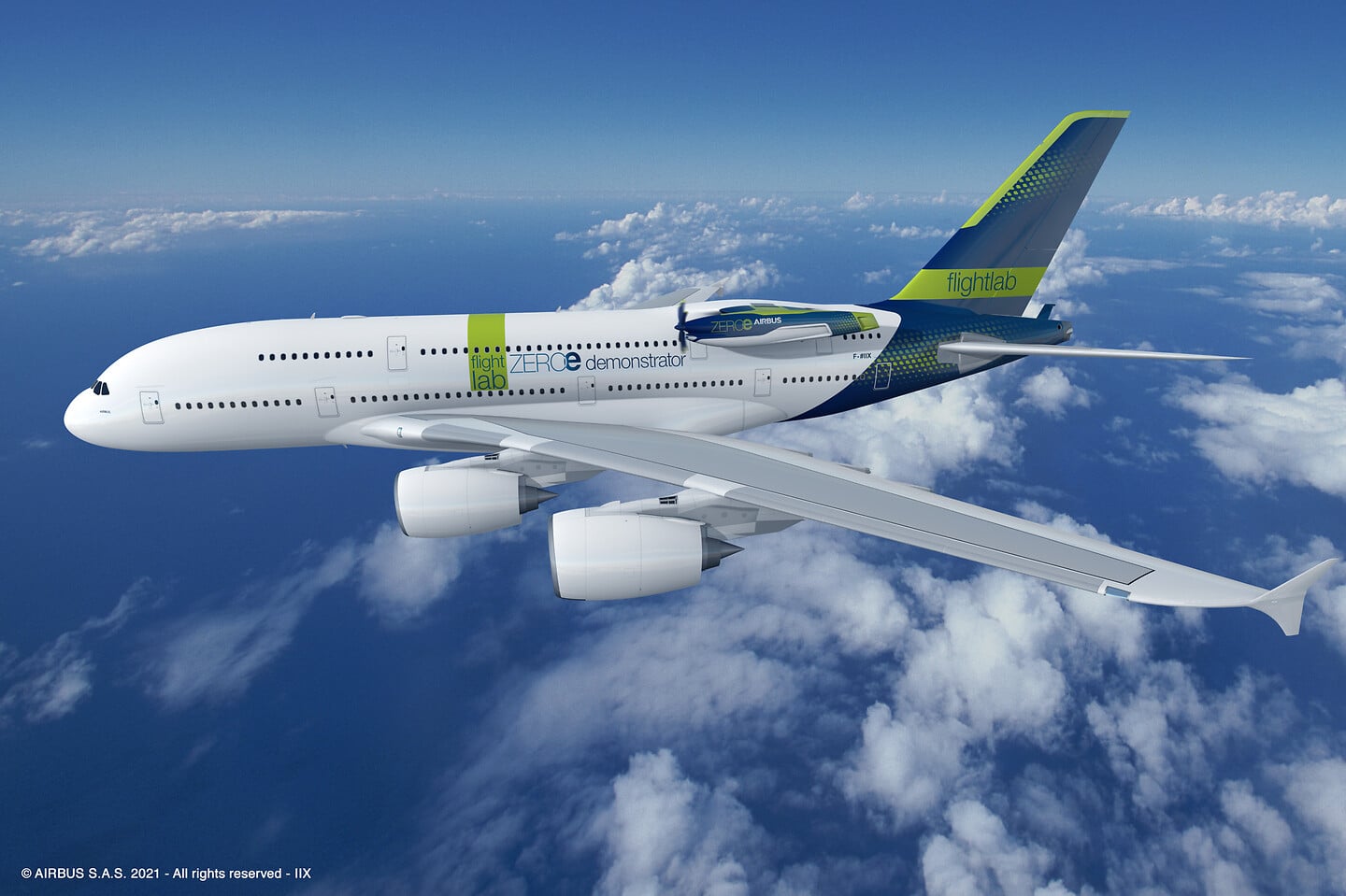Aerospace
Airbus prepares for its first megawatt-class hydrogen fuel-cell engine flight-test demonstrator
Airbus prepares for its first megawatt-class hydrogen fuel-cell engine flight-test demonstrator

A brand-new, zero-emission aeroplane that will be in service by 2035 could use an architecture of hydrogen-powered fuel cells with cryogenic storage. In less than four years, Airbus is already on schedule to design, construct, and demonstrate such a megawatt-class propulsion system.
While these concepts explore various size categories, aerodynamic layouts and propulsion system architectures, they all have one thing in common: they are hydrogen-fuelled. Three of them have engines which use hydrogen combustion to drive their gas turbines – similar to the way that turbofans and turboprops burn kerosene today, but without the latter’s CO2 and particulate emissions.
Meanwhile, a fourth ZEROe concept aircraft, representing a high-wing 100-seat regional airliner, features six eight-bladed propellers attached to engine pods – a configuration recently patented by Airbus. While outwardly resembling turboprop powerplants, these pods actually contain hydrogen fuel cells which produce electricity as the result of an electro-chemical reaction to power electric motors. It is in this context that Airbus has been conducting feasibility studies and laboratory tests to realise a fully working megawatt-class fuel-cell engine and demonstrator which could be tested in flight by the middle of this decade – around 2026.
For this proof-of-concept demonstrator, liquid hydrogen from the cryogenic tank is converted into a gaseous state. It is then distributed to the fuel cell via supply lines running from the tank and through an external ‘stub’ aerodynamic and load-bearing support structure to the engine pylon interface.
American Airlines Makes Equity Investment in Universal Hydrogen(Opens in a new browser tab)
Modifying the A380
The A380 was the obvious choice as ‘host’ for the hydrogen fuel-cell engine demonstrator. “It has plenty of space internally – so there are no constraints in terms of accommodating everything we need, as well as the ability to test multiple configurations.”
“With the A380 it also have an aircraft that’s already fully instrumented. The flight-test-instrumentation (FTI) is a big part of the project and can be a big driver in terms of cost and planning. So MSN001 was the perfect fit for it.”
The overall concept which the teams settled on was to make the minimum amount of structural modification inside the A380. just reinforcing two frames of the fuselage and then fitting this stub externally. Then fitting a specially adapted pylon to attach the structure of the pod onto this stub. Overall it will be able to support high sustained static and dynamic loads.

Aerospace
When Ratan Tata was denied entry to the airfield at the Aero India show, he waited

During our visit to Aero India 2019, we had the unexpected opportunity to see Ratan Tata at the event, which was a thrilling moment for us. However, there was a surprising hiccup when the security staff didn’t allow him to enter due to a lack of a security pass.
Despite this, he remained calm and patiently waited for about 20 minutes until a member of the Tata team brought him the required pass, after which he calmly proceeded inside. It was a humbling sight, showcasing his composed demeanor even in such situations.
Ratan Tata ji is not only a renowned industrialist but also a trained pilot, holding a pilot’s license. In 2007, he became the first Indian civilian to fly the F-16 Falcon during the Aero India show in Bangalore—a proud moment for the nation.
His passion for aviation extended beyond flying, as he played a key role in shaping India’s aerospace industry. Under his leadership, Tata ventured into manufacturing and maintaining aerospace components while upholding its legacy of quality. Notably, Tata’s collaboration with Airbus to develop and manufacture the C295 aircraft is a testament to its growing influence in the sector.
-

 Aviation2 months ago
Aviation2 months agoMicrosoft Flight Simulator Raises $3 Million to Bring Back the An-225 Mriya
-

 Airlines2 months ago
Airlines2 months agoQantas Engineers Stage Walkout Over Cost of Living Concerns
-

 Airlines2 months ago
Airlines2 months agoQatar Citizens Can Travel to the United States Without a Visa
-

 Aviation2 months ago
Aviation2 months agoQatar Airways bans these new Electronic Devices on plane
-

 Airlines2 months ago
Airlines2 months agoJapan Airlines Rolls Out Free Domestic Flights to International Passengers
-

 Defence2 months ago
Defence2 months agoWhich Country Has the Largest Fleet of Fighter Aircraft?
-

 Airport2 months ago
Airport2 months agoWestern Sydney Airport Welcomes Its First Plane After 6 Years of construction
-

 Aviation2 months ago
Aviation2 months agoDid you know ? Once Boeing 747 carried 1088 passenger in 1991








